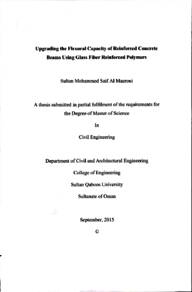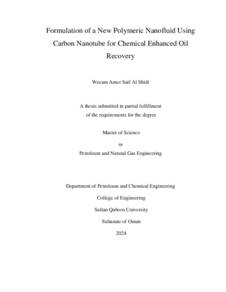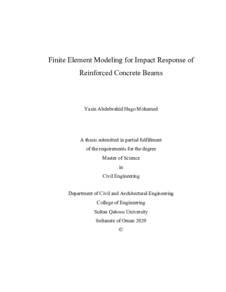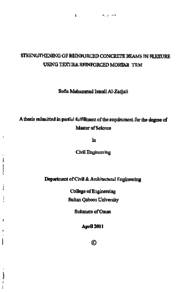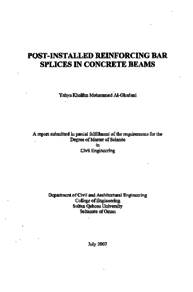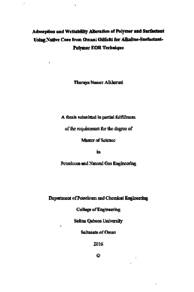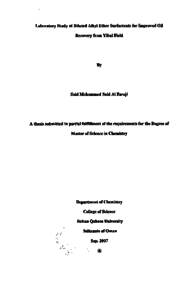Document
Upgrading the flexural capacity of reinforced concrete beams using glass fiber reinforced polymers.
Publisher
Sultan Qaboos University
Gregorian
2015
Language
English
Subject
English abstract
This research study aims to investigate the flexural behavior of reinforced concrete beams strengthened with different types of Glass Fiber Reinforced Polymers (GFRP) using different strengthening techniques. The experimental work includes the construction and testing of eleven (11) full scale reinforced concrete beams of 200mm x 300mm x 2760mm (width depth length). The research study includes four parameters: the strengthening technique used (Near surface mounted (NSM) and externally bonded (EB)), type of GFRPs (Glass FRP bars and Glass FRP sheets), amount of GFRPs, and additional anchorage system. All the eleven (11) beam specimens included a reference beam (without strengthening). Six (6) beams strengthened with near surface mounted (NSM) technique using two different types of GFRP bars. The remaining four (4) beams were strengthened with externally bonded (EB) technique using GFRP sheets with different anchorage systems. After strengthening, all the beams were tested in flexure under four point bending set-up. The experimental test results include ultimate capacity, deflection, cracking, reinforcement and concrete strains, and mode of failure have been recorded
All the strengthened beams showed an increase in the ultimate load capacity. The increase ranged between 41 and 166% compared with the reference beam. Three NSM strengthened beams (with type 1 GFRP bars) failed by steel yielding followed by rupture of the GFRP bars. The other three NSM strengthened beams (with type 2 GFRP bars) failed by steel yielding followed by concrete crushing followed by debonding of the GFRP bars and they showed good ductile behavior with high deflection values at ultimate load which were almost similar or even higher than that recorded in the reference beam. This gives an amble warning before failure and can be considered as an important advantage of this technique. EB In-groove technique showed the best results out of all used techniques in term of ultimate capacity. This approved that externally bonded with in-groove technique system did show extra advantage compared with EB and on-groove techniques. Both types of additional anchorage systems (intermediate grooves for NSM and U-shape in EB) showed great advantages in both EB and NSM strengthened beams in terms of increasing ultimate capacity and improving ductility behavior by delaying the debonding of FRP. The load carrying capacities of the tested specimens were also calculated using the ISIS Design Manual guidelines and compared to the experimental results.
Member of
Resource URL
Category
Theses and Dissertations

